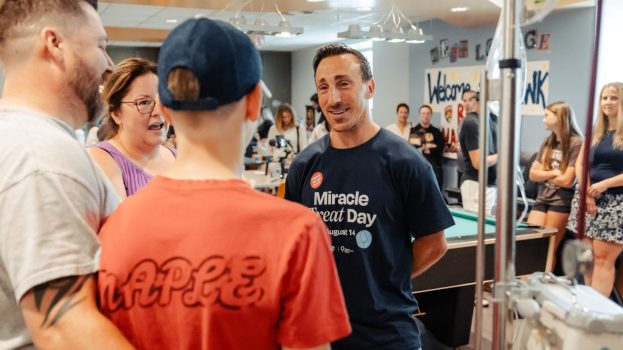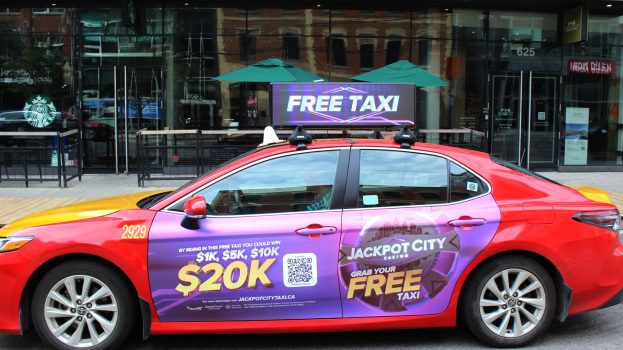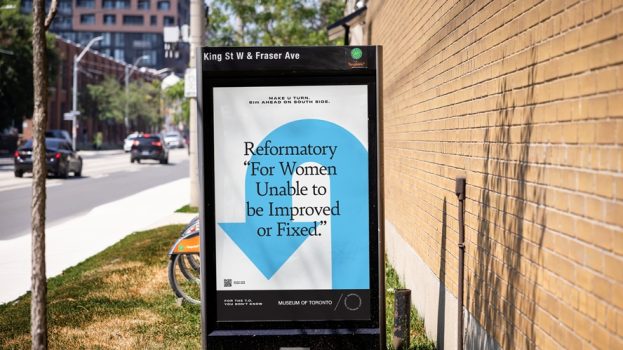The Via Rail Northlander train moved slowly, down the tracks that squeeze between Toronto’s Bayview extension and the Don River, heading for Union station.
My car merged into the southbound Bayview traffic and for a few minutes the train and I moved together through the dark evening.
The passengers couldn’t see me but I could see them. There was a young man reading a book in one seat. He looked sad. I imagined he had lost his job in some small Northern Ontario town.
He’s heading to the big city looking for work, I imagined. Had to leave his wife and kids behind. He’s got to save some money and then call for his family to come join him next month maybe.
Once again I had put myself in someone else’s shoes. Once again I had imagined what some other life might be like. When done to the extreme, I can actually forget I’m me and, for a few seconds, become someone else. I’d worried about this aspect of my behaviour until I came across an article in the National Post entitled ‘Artist creates a home for the minutiae of people’s lives’.
Davy Rothbart, a 26-year-old Chicago artist, gathers up notes, audio tapes, handwritten lists and other discarded pieces and then publishes these examples of humanity’s flotsam and jetsam in a magazine format call Found Magazine (www.foundmagazine.com).
Jean-Pierre Jeunet’s film, Amélie, is another example of peering through the openings of other lives. Moviegoers examine the heroine as she examines the lives of others. We watch Amélie hide behind her veil of anonymity and, by cleverly planting enticing bits of minutiae, change the lives of others for better or for worse.
We love to witness the lives of others and I would go as far as to say this fascination forms the underpinning for most mass media content. Did we gobble up stories about poor Public Works Minister Alfonso Gagliano, his difficulties and his subsequent posting to Denmark because we were interested in politics and foreign policy or because we secretly enjoy watching powerful people self destruct before our eyes? Or maybe we’re secretly wiping our brow and thinking… ‘Thank God it happened to Alfonso and not to me.’
When Carlos Delgado hits a game-winning home run are we interested in the fact the Jays just improved their win/loss ratio or are we secretly entering into Delgado’s world and participating in that moment of glory with him?
Reality TV is the ultimate example of the thrills and spills of mind shifting. The TV industry has stumbled upon a low cost way to entice viewers into the act of witnessing the silly antics of others. By way of the reality model, networks create a viewing environment that replicates the act of peeking through a knothole. The only difference between Friends and Survivor is the extent to which the actors attempt to create the illusion of real life.
Perhaps there are some in-the-field marketing and media applications we can formulate from all of this. Attention-grabbing media plans would, if my theory were correct, bait target groups by employing media and tactics that replicate life-witnessing activity.
The wild-postings medium – paper posters stuck to new building hoardings – resembles bits and pieces of personal messages. Perhaps pedestrians are attracted to these little posters because they resemble personal and private messages not meant for the public at large (which makes them all the more interesting).
Or how about those ads in washrooms; graffiti-like, they possess characteristics of private communication in a very public setting.
Elevator monitors give us a focus point while we imagine what those others standing beside us might really be like.
Teaser campaigns are small and obtuse bits of commercial messaging, fascinating when they flicker by but because they lack context, need more information before they make sense.
Great ads, commercials and media plans, the ones that really work, are like that guy on the train I imagined was heading for Toronto to find work. You notice him but there’s enough room for interpretation to make the story really interesting.
Rob Young is a founding partner and SVP, planning and research, at Toronto-based Harrison, Young, Pesonen & Newell. He can be reached at ryoung@hypn.com.























